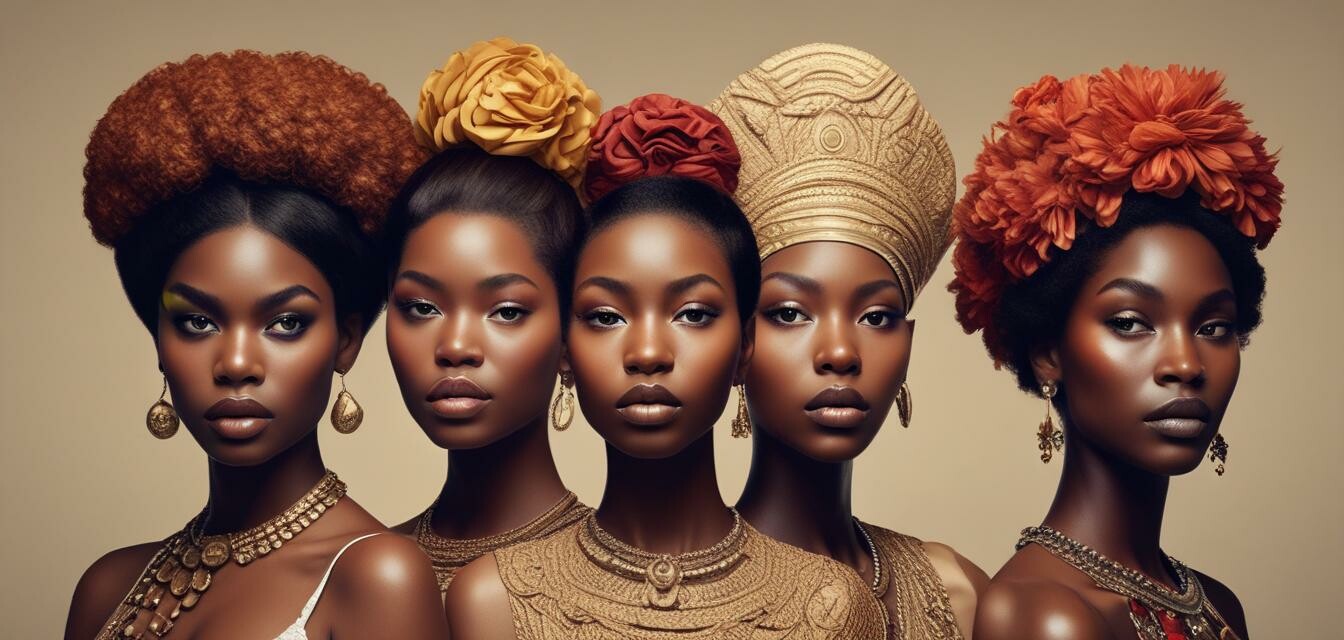
Celebrating beautiful brown skin through the years
Key Takeaways
- The representation of brown skin in beauty and media has transformed significantly over the decades.
- Iconic moments in history have helped shape perceptions of beauty for African-American women and men.
- Understanding this evolution fosters appreciation for the diverse beauty within the community.
Throughout history, the representation of brown skin in the realms of beauty and media has undergone dramatic changes. From the early days of film to today's diverse advertising campaigns, the journey reflects broader cultural shifts and the ongoing fight for inclusivity in beauty standards. This article delves into key moments that celebrate the beauty of brown skin and highlights influential figures who have paved the way.
The evolution of representation
| Decade | Key Event |
|---|---|
| 1920s | First African-American models gain spotlight in fashion shows. |
| 1960s | Television shows featuring black characters become more popular. |
| 1980s | Major magazines start to showcase black beauty on their covers. |
| 2000s | Social media influences the beauty industry and representation. |
| 2020s | Increased focus on inclusive beauty products and advertising. |
Iconic figures in brown skin representation
As we reflect on the evolution of beauty standards, several iconic figures have emerged as trailblazers in celebrating and promoting brown skin. These individuals not only made waves in their respective fields but also inspired generations to embrace their unique beauty.
- Josephine Baker - The early 20th-century dancer and actress challenged beauty norms with her vibrant performances and unapologetic pride in her heritage.
- Naomi Campbell - As one of the first black supermodels, Campbell shattered barriers in the fashion industry during the 80s and 90s.
- Beyoncé - A contemporary symbol of strength and beauty, Beyoncé promotes self-acceptance and confidence through her music and public persona.
Impact of beauty standards on culture
The changing perceptions of beauty have significantly influenced culture and societal attitudes. Media representation affects self-esteem and how individuals see themselves. As we have seen, both positive and negative portrayals can lead to various outcomes:
Pros
- Increased visibility of brown skin promotes acceptance and appreciation.
- Iconic figures serve as role models, encouraging self-confidence among youth.
- Diverse marketing campaigns contribute to a broader understanding of beauty.
Cons
- Historical underrepresentation can lead to negative self-image.
- Some media portrayals may reinforce stereotypes rather than challenge them.
Modern beauty movements
In recent years, the beauty industry has seen an uptick in movements advocating diversity and inclusivity. Many brands now focus on creating products that cater specifically to a variety of skin tones. Iconic campaigns have emerged to emphasize that beauty comes in all shades:
- Campaigns for inclusivity: Many high-profile brands have initiated campaigns that celebrate all skin tones.
- Social media influence: Platforms like Instagram allow users to share their diverse beauty journeys, creating a global community.
- Collaborations with influencers: Partnering with beauty influencers who represent various skin tones has become commonplace.
The future of brown skin representation
As we look to the future, it's evident that our collective understanding of beauty is continuously evolving. There are several key areas to watch as they influence how brown skin is represented in media and beauty:
- Advancements in inclusive skincare products tailored for various skin types.
- Shifts in media portrayal, prioritizing authentic representation over stereotypes.
- Growth of beauty brands founded by people of color, enhancing representation in leadership roles.
Embracing unique beauty
Ultimately, the ongoing conversation surrounding brown skin representation encourages us all to embrace our unique beauty. It's vital to support brands and campaigns that celebrate our differences and create space for self-expression. By acknowledging and celebrating the history of brown skin in beauty, we can shape a future that reflects true inclusivity.
Conclusion
Celebrating beautiful brown skin is not just about the physical appearance; it’s about the dignity, pride, and empowerment that comes from embracing one’s heritage. As we navigate through this ongoing journey of representation in beauty and media, let’s remain inspired by the icons who came before us and continue to uplift each other in embracing our diverse beauty.
Explore More
For further insights on beauty and personal care, be sure to check out our detailed guides on buying guides and the latest trends in news and trends. Explore our stunning range of body care, haircare, and skincare products designed for you.